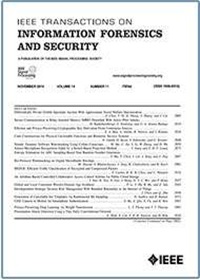Rethinking Prefix-Based Steganography for Enhanced Security and Efficiency
IF 6.3
1区 计算机科学
Q1 COMPUTER SCIENCE, THEORY & METHODS
IEEE Transactions on Information Forensics and Security
Pub Date : 2025-03-10
DOI:10.1109/TIFS.2025.3550073
引用次数: 0
Abstract
Generative models have demonstrated remarkable capabilities in synthesizing realistic content, creating new opportunities for secure communication through steganography---the practice of embedding covert messages within seemingly innocuous data. While prefix-based steganography, which encodes secret messages into shared probability intervals during generative sampling, has emerged as a promising paradigm for provably secure communication, its practical adoption remains constrained by inherent tradeoffs between security, capacity, and efficiency. To address these challenges, we propose two enhancements. The first enhancement optimizes quantization distortion in existing frameworks to minimize KL divergence, thereby enhancing theoretical security. The second redesigns the sampling mechanism via distribution coupling to amplify steganographic capacity, achieving this without incurring substantial computational overhead. Experimental validation on text generation task confirms our enhancements substantially outperform previous implementations, demonstrating notable capacity improvements, marked security enhancements, and efficiency gains on consumer-grade hardware. Cross-task comparisons with popular provably secure steganography further establish the proposed enhancements as achieving superior security-capacity-efficiency tradeoffs across diverse generative scenarios, advancing the practical deployment of provably secure steganography systems.求助全文
约1分钟内获得全文
求助全文
来源期刊

IEEE Transactions on Information Forensics and Security
工程技术-工程:电子与电气
CiteScore
14.40
自引率
7.40%
发文量
234
审稿时长
6.5 months
期刊介绍:
The IEEE Transactions on Information Forensics and Security covers the sciences, technologies, and applications relating to information forensics, information security, biometrics, surveillance and systems applications that incorporate these features
 求助内容:
求助内容: 应助结果提醒方式:
应助结果提醒方式:


